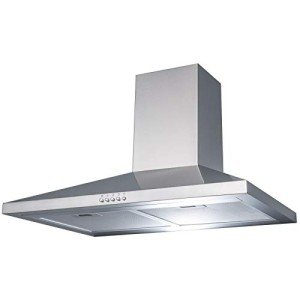7 Things You've Never Known About Kitchen Extractor
페이지 정보
작성자 Alphonso 작성일25-11-27 03:46 조회2회 댓글0건관련링크
본문
The Essential Kitchen Extractor Fan: A Guide to Choosing the Right One for Your Home
When it concerns cooking, the kitchen is typically regarded as the heart of the home. Nevertheless, it can likewise be a place filled with odorous smoke, greasy air, and an accumulation of moisture. This is where a kitchen extractor fan plays an essential role. It not only enhances the air quality of your kitchen however also assists maintain a cleaner cooking environment.
In this comprehensive guide, we'll explore the numerous aspects of Modern Kitchen Extractor Fan extractor fans, why they're necessary, the various types offered, how to pick the right one for your kitchen, and ideas for maintenance. Plus, we'll address some regularly asked questions to provide a well-rounded understanding of this necessary kitchen home appliance.
What is a Kitchen Extractor Fan?
A kitchen extractor fan, likewise called a range Hood Cooker or kitchen hood, is a home appliance designed to remove smoke, steam, grease, and cooking odors from the air. It works by pulling in the pollutants released throughout cooking and filtering them out, either by recirculating clean air back into the kitchen or venting it outside through a duct.
Why You Need a Kitchen Extractor Fan
Improves Air Quality: Cooking creates a range of airborne particles, including grease and wetness, which can impact indoor air quality. An extractor fan assists eliminate these contaminants.
Prevents Accumulation of Grease: When cooking, grease can decide on your kitchen surfaces, walls, and even your devices. A great extractor fan assists lessen this buildup.
Removes Cooking Odors: A reliable fan will help eliminate undesirable smells from your kitchen, making it a more enjoyable area for cooking and entertaining.
Lowers Moisture Levels: Excess moisture can result in mold and mildew growth. An extractor fan assists handle humidity levels, keeping your kitchen safe and dry.
Kinds Of Kitchen Extractor Fans
Kitchen extractor fans been available in different styles and types to suit different requirements and kitchen designs. Here's a contrast table of the typical types:
| Type | Description | Pros | Cons |
|---|---|---|---|
| Wall-Mounted | Installed on the wall above the cooking surface area. | Space-saving and effective for most kitchens. | Needs area on the wall. |
| Island | Installed over kitchen islands, offering 360-degree ventilation. | Stylish look and strong efficiency. | Requirements proper ducting and space. |
| Under-Cabinet | Installed below cupboards or cabinets. | Discreet, saving kitchen space and preserving aesthetics. | Less powerful than other types. |
| Ductless | Filters air and recirculates it back into the kitchen. | Easy to install, no duct work is required. | Filters require routine replacement. |
| Integrated | Constructed directly into kitchen cabinets for a seamless look. | Very aesthetic, mixes well with customized designs. | May lack effective extraction. |
How to Choose the Right Kitchen Extractor Fan
When picking an extractor fan, think about the following factors:
Size: The size of the fan ought to line up with your cooktop's size. A general guideline is that the fan should be at least as broad as the cooking surface.
CFM (Cubic Feet per Minute): This determines the fan's airflow capability. A greater CFM score suggests better extraction efficiency. Usually, kitchens require a fan that provides 100 CFM for every single 10,000 BTUs of cooking power.
Sound Level: Noise levels differ throughout models. If low sound is a top priority, look for fans that run at 60 decibels or lower.
Ducted vs. Ductless: Choose between a ducted design, which vents air outside, or a ductless one, which filters and recirculates air. Ducted systems are typically more efficient but need more installation work.
Style: Extractor fans are readily available in different styles and finishes. Pick one that fits your kitchen's decoration and practical requirements.
Maintenance Tips
To keep your kitchen extractor fan running efficiently, follow these maintenance tips:
Regular Cleaning: Clean the filters and fan blades regularly to avoid grease buildup and keep efficiency. Depending on usage, consider cleaning every 4-8 weeks.
Examine the Ducting: Ducted systems should have the ducting checked for blockages frequently. Ensure that there isn't any grease accumulation.
Change Filters: For ductless designs, change charcoal filters as per the manufacturer's suggestions, usually every 6-12 months.
Examine for Wear and Tear: Regularly ensure that the fan is safely mounted which no seals or connections are harmed.
Frequently Asked Questions (FAQ)
Do I really require an extractor fan in my kitchen?
- Yes, island extractor fans an extractor fan improves air quality and assists keep your kitchen's tidiness and safety.
What is the perfect height for an extractor fan above the cooktop?
- A common suggestion is to install it at a height of 24 to 30 inches above the cooktop, depending upon the type of cooking you do.
How often should I clean up the extractor fan?
- It's recommended to clean filters every 4-8 weeks, while ducts should be checked every year.
Can I install an extractor fan myself?
- While some designs are easier to install-- like ductless designs-- ducted installations can be complicated and may require professional assistance.
What is the difference between CFM and sones?
- CFM determines air flow capability, while sones determine the noise level. Ideal fans have high CFM rankings with low sones for Hob Extractor Fan quieter operation.
A kitchen extractor fan is a vital tool for every cooking area. Whether you're a passionate home cook or prefer takeout, maintaining air quality, lowering humidity, and removing smells will enhance your cooking experience. By comprehending the different kinds of extractor fans, their benefits, and how to keep them, property owners can guarantee a clean and inviting kitchen environment.

댓글목록
등록된 댓글이 없습니다.
